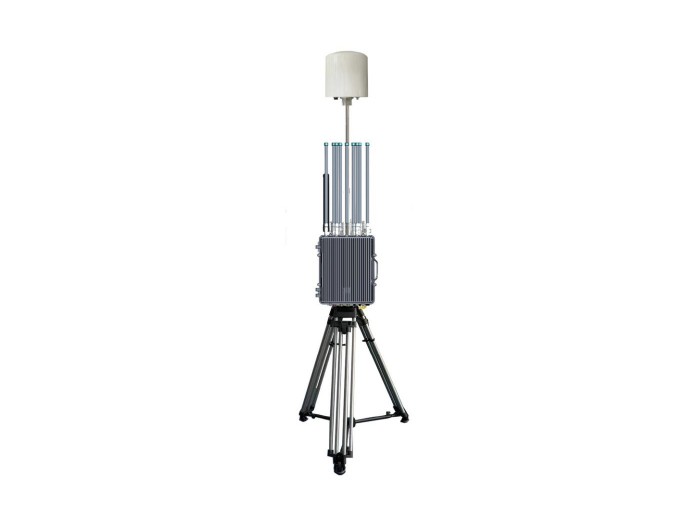Net Jammer for Drones Near Commercial Aircraft: Protecting Airspace and Enhancing Aviation Safety
In recent years, the increasing presence of drones near commercial aircraft has raised serious safety and security concerns worldwide. Airports and airlines face escalating threats due to unauthorized drones, which can interfere with aircraft operations, cause delays, or worse, result in accidents. How can air traffic controllers and aviation security personnel effectively prevent drones from disrupting commercial flights? A reliable solution gaining traction is the use of a net jammer designed specifically for drones around commercial aircraft. This technology blocks drone communications, preventing them from reaching restricted airspace. If you’re searching for ways to maintain safe skies and secure flights, understanding how net jammers work and their applications in aviation safety is essential. In this article, we will explore the role of net jammers for drones near commercial aircraft, their benefits, and practical deployment scenarios.
What Is a Net Jammer for Drones and How Does It Work?
A net jammer for drones, often referred to as a drone jammer, is a device that disrupts the control signals between drones and their operators. By emitting targeted radio frequency signals, it blocks the communication link that drones rely on, effectively forcing them to either hover in place, return to their takeoff point, or land safely. This interference prevents drones from penetrating no-fly zones around commercial aircraft.
Specifically designed net jammers operate on frequencies commonly used by consumer and commercial drones, such as 2.4 GHz and 5.8 GHz bands. The technology often combines GPS signal jamming to prevent drones from navigating into restricted airspace. Aviation authorities and airports increasingly adopt these solutions to manage rising drone threats. According to the FAA, there were over 4,800 unauthorized drone sightings near airports in 2023 alone, highlighting the urgent need for effective countermeasures.
For commercial aircraft, even small drones can pose serious risks on takeoff or landing phases when the aircraft is closest to the ground. Net jammers act as a defensive measure to secure these vulnerable moments by denying drones access or forcing them away before they become a hazard. Most importantly, these systems are engineered to comply with aviation regulations, ensuring they do not interfere with aircraft communications or navigation.
Benefits of Using Net Jammers Around Commercial Aircraft
Implementing net jammer technology for drones near commercial aircraft yields several critical benefits for aviation safety and operational efficiency:
- Enhanced Airspace Security: Net jammers create a secure buffer zone, preventing drones from entering prohibited airspaces around airports and flight paths, mitigating collision risks.
- Reduced Flight Delays: Drone incursions often trigger flight delays or diversions. With jamming solutions, these interruptions can be minimized, ensuring on-time departures and arrivals.
- Protection Against Unauthorized Surveillance: Certain drones are equipped with cameras, posing privacy and security threats. Jamming prevents potential aerial spying around sensitive areas of airports and aircraft.
- Cost-Effective Risk Mitigation: Compared to physical drone interception methods, net jammers provide a scalable approach to managing drone threats without costly equipment or staff.
- Compliance with Aviation Safety Courses: Many aviation safety protocols encourage the integration of RF countermeasures. Net jammers support airport authorities in meeting regulatory requirements.
A well-known example is Gatwick Airport's major disruption in 2018 caused by drone sightings, resulting in hundreds of flight cancellations. Following that, investment in drone detection and jamming technology surged across global airports, proving the critical value of net jammers in day-to-day airport operations.
Practical Applications and Deployment Scenarios of Net Jammers in Aviation
Deploying net jammers effectively requires understanding the operational environment and coordination with aviation authorities. Here are common scenarios where net jammers are invaluable for commercial aircraft safety:
- Airport Perimeters and Runways: Installing net jammers around airport boundaries and near runways creates protective zones, reducing risk during aircraft takeoff and landing phases.
- Control Towers and Ground Operations: Ground control areas can use portable jammers to prevent unauthorized drone pilots from interfering with critical communications or operations.
- Onboard Aircraft Protection (Emerging Technology): Some advanced research focuses on integrating small-scale jammers on commercial planes for in-flight drone threats, although regulatory challenges remain.
- Temporary Event Security: For large-scale aviation events or VIP flights, temporary net jammer setups offer customized protection against drone disruptions.

Integrating drone detection radar systems with net jammer units enhances responsiveness, enabling airport security teams to identify threats quickly and deploy jamming precisely. Additionally, coordinated regulations by aviation authorities ensure jamming does not interfere with essential communication channels for aircraft, emphasizing the importance of professional installation and operation.
Key Recommendations for Implementing Net Jammers for Drone Protection Around Commercial Aircraft
- Conduct comprehensive risk assessments at your airport or aviation facility to identify vulnerable zones for drone interference.
- Invest in integrated drone detection and net jammer systems for timely threat identification and mitigation.
- Ensure compliance with aviation and local regulations governing radio frequency jamming to avoid operational conflicts.
- Train security personnel on the safe and effective use of net jammers, including recognizing drone types and appropriate jamming techniques.
- Consult with experts or reputable net jammer providers for customized technology solutions tailored to your commercial aircraft environment.
Want to learn more about how net jammer technology can secure your airspace? Visit our website or contact us for professional consultations customized to your aviation safety needs!
Conclusion: Protecting Commercial Aircraft with Advanced Net Jammer Solutions
As drone usage continues to escalate, safeguarding commercial aircraft from unauthorized drone interference is more critical than ever. Net jammer technology offers a practical, effective, and regulatory-compliant method to secure airspace, prevent collisions, and enhance overall aviation safety. By integrating state-of-the-art drone jammers with detection systems, airports and airlines can proactively manage drone risks and maintain smooth flight operations.
Our company specializes in providing advanced net jammer solutions tailored for the aviation industry. Contact us today to learn how our technology can help protect your commercial aircraft and keep skies safe. Visit our website now to explore our offerings or reach out for a free consultation with our experts.

















